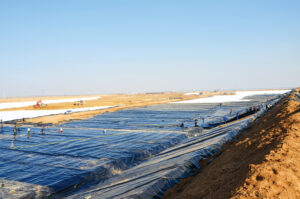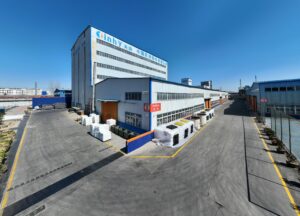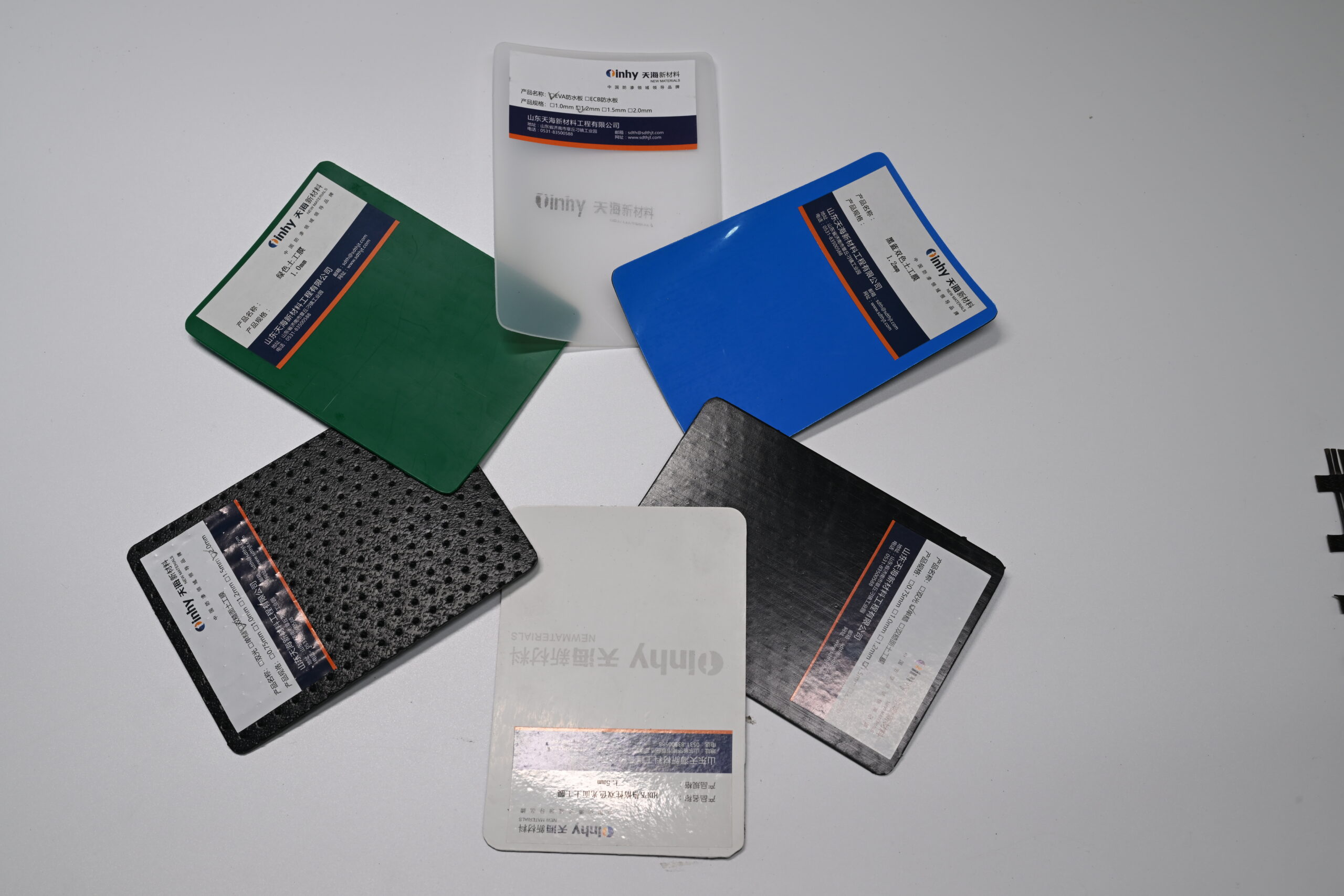Anti-seepage principle of geomembrane
Physical isolation: Geomembranes have high sealing and anti-seepage capabilities, which can form a physical barrier that effectively prevents moisture, gas or other liquids from penetrating through soil or rock layers and entering the area below. Geomembranes have low permeability through their own material properties, such as high-density polyethylene (HDPE), which reduces the risk of leakage.
Chemical stability: Geomembrane materials have strong chemical resistance and can resist the erosion and corrosion of chemical substances, organic substances or harmful substances in the soil. This chemical stability enables the geomembrane to maintain good anti-seepage function in various soil environments.
Ensuring the integrity of seams and connections: A geomembrane needs to join its different parts into a continuous barrier by methods such as welding, adhesives or mechanical connectors. The integrity of these joints is critical to ensure that there are no leak points, thereby ensuring overall leak-tightness.
Structural design and construction technology: The performance of geomembrane is also related to its structural design and construction technology. Correct membrane thickness, selection of appropriate geomembrane materials, and compliance with relevant design codes and standards can all improve the anti-seepage performance of geomembranes.
Overall, geomembranes effectively prevent moisture, gas, or other liquids from penetrating the area beneath the membrane through the effects of physical isolation and chemical stability. This anti-seepage principle can be widely used in water conservancy projects, environmental governance, road bases and other fields, providing reliable anti-seepage effects.

When using geomembrane, you need to pay attention to the following points:
Choose the right geomembrane: Different engineering and environmental conditions may require different types of geomembranes. When choosing a geomembrane, the thickness, chemical resistance, aging resistance, strength and other characteristics of the material should be considered according to actual needs, and products that meet relevant standards and specifications should be selected.
Pre-construction inspection: Before commencing construction, a comprehensive survey and inspection of the construction area should be carried out. Check the levelness of the ground, the presence of sharp objects, weeds, gravel, etc., and the properties of the soil. Clean up and treat these to avoid damage to the geomembrane.
Avoid damage: Once the geomembrane is damaged, it will lose its anti-seepage and isolation effects. During installation, avoid using sharp tools or heavy objects to directly contact the surface of the geomembrane, and handle the connection seams carefully to avoid damage.
Accurate connection seam: If the geomembrane needs to be connected to cover a larger area, the quality of the connection seam is very important. Make sure to use the proper joining method and follow the manufacturer’s directions for proper welding, gluing or mechanical joining to ensure a strong, leak-free joint.
Control construction conditions: During construction, weather and environmental conditions need to be well controlled. Avoid construction under strong wind, rainfall or extreme temperature, which may affect the installation quality of the geomembrane.
Regular inspection and maintenance: Once the geomembrane is installed, it is important to check its condition regularly. Regularly check whether the geomembrane is damaged or leaking, and repair or replace the damaged part in time. At the same time, pay attention to changes in the surrounding environment, such as tree growth, underground pipeline construction, etc., which may affect the geomembrane.
Follow relevant codes and standards: When using geomembrane, relevant design codes and standards should be followed to ensure the correct application and construction quality of geomembrane.
Please remember that it is best to consult professional engineers or professionals engaged in related projects for advice and guidance before using geomembranes to ensure the accuracy and reliability of construction.

About us
Shandong Tianhai New Materials focuses on the field of geosynthetics, providing a variety of solutions and products, including geotextiles, geomembranes, geogrids, geotubes, etc. These products are widely used in civil engineering, environmental engineering, water conservancy engineering, traffic engineering and other fields to enhance soil, strengthen structure, drainage isolation and other functions.
In addition to geosynthetics, Shandong Tianhai New Materials is also involved in the field of building waterproof materials, providing high-quality waterproof products and solutions. Their waterproof materials include waterproof membranes, waterproof coatings, waterproof adhesives, etc., and are widely used in projects such as construction engineering, underground engineering, and infrastructure construction.
As a technology-leading new material company, Shandong Tianhai New Materials is committed to continuous innovation and product quality improvement, and has established a good reputation in the industry. Adhering to the principles of high quality, reliability and environmental friendliness, they provide customers with quality products and services.
Contact us
[wpforms id=”40″]
Author
-

Founded in 2002, Tinhy's team focuses on the manufacturing, marketing, installation, application and research and development of geosynthetic materials.
View all posts




